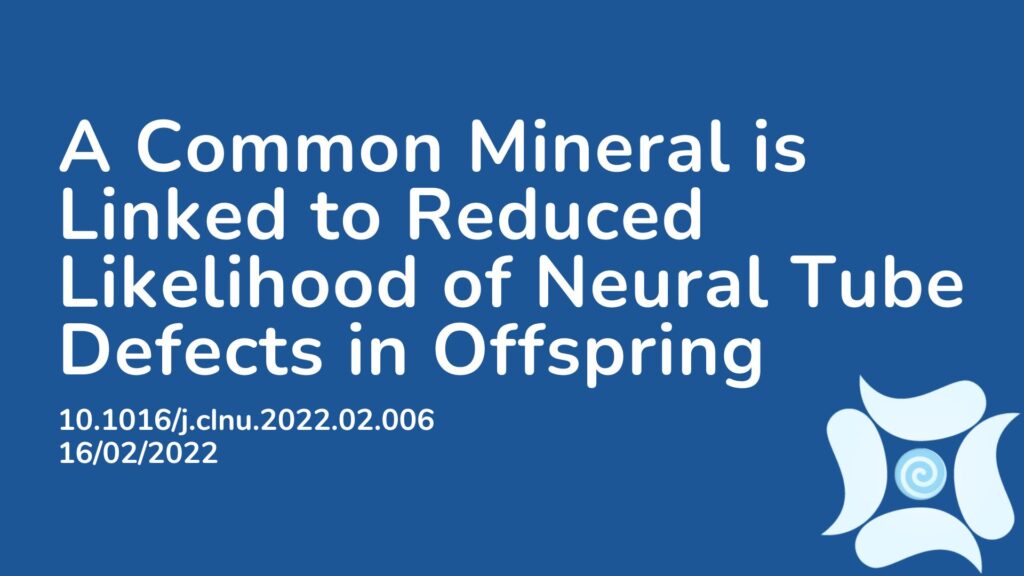Summary:
Neural tube defects (NTDs) are rare but significant congenital abnormalities with a range of causes. This study aimed to investigate the potential relationship between specific nutrients and metabolic pathway indicators in maternal serum and their impact on the likelihood of NTDs. 99 mothers of children with NTDs and 114 mothers of children without NTDs were included in the study. Five essential minerals (iron, zinc, selenium, cobalt, and molybdenum) and 106 metabolic pathway markers in maternal serum were assessed. The results showed that a higher intake of selenium was associated with a decreased likelihood of NTDs compared to low concentrations and that the arginine pathway may be contributing to mediating this relationship. This study therefore highlights the potential association between selenium levels and a reduced likelihood of NTDs and the role of arginine in mediating this association.
Abstract:
Background and aims: Neural tube defects (NTDs) are severe congenital malformations and have a complex etiology. This study aimed to explore the association between selected essential trace elements (ETEs) and metabolic pathway markers in the serum of women and the likelihood of NTDs. Methods: The study included 99 mothers of offspring with and 114 mothers of offspring without NTDs. Five ETEs (iron, zinc, selenium [Se], cobalt, and molybdenum) and 106 metabolic pathway markers in maternal serum were quantified. The associations between ETEs and metabolic pathway markers and the chance of NTDs were examined. Mediating effects of the metabolic pathway markers on the association between Se and the likelihood of NTDs were evaluated. Results: Compared to a Se concentration below the median, a concentration above the median was associated with a decreased chance of NTDs with an odds ratio of 0.29 (95% confidence interval: 0.11–0.66). The concentrations of 32 metabolic pathway markers differed between mothers of offspring with and without NTDs; five of these (asymmetric dimethylarginine, ornithine, glutamate, proline, and phenylalanine) were associated with increased chances of NTDs, with adjusted odds ratios of 3.01 (1.31–7.31), 2.79 (1.18–6.86), 2.38 (1.03–5.75), 2.41 (1.05–5.75), and 2.27 (1.09–5.40), respectively, for the higher interquartile of concentration compared to the lower one. Three arginine pathway metabolic markers (i.e., dimethylarginine, ornithine, and proline) mediated the association between Se and the occurrence of NTDs. Conclusion: This study suggests an association between Se and a reduced chance of NTDs. The arginine pathway may play a role in mediating this association.
Article Publication Date: 16/02/2022
DOI: 10.1016/j.clnu.2022.02.006




